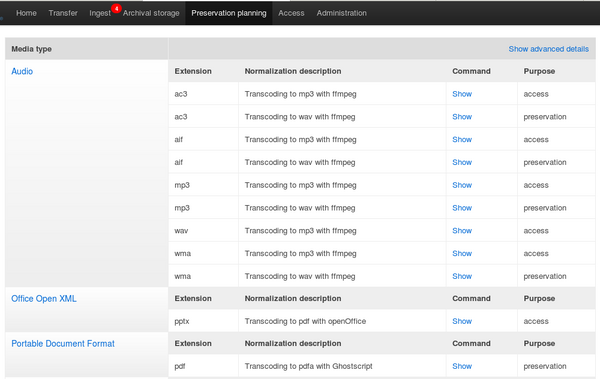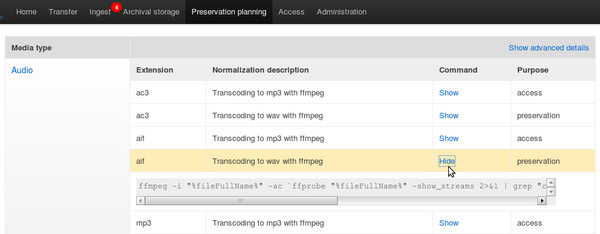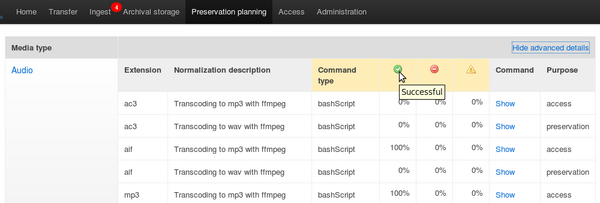UM preservation planning 0.8
Main Page > Documentation > User manual > User manual 0.8 > Preservation planning
General description[edit]
Archivematica's primary preservation strategy is to normalize files to preservation and access formats upon ingest. The preservation copies are added to the AIP and the access copies are used to generate a DIP for upload to the access system. Note that the original files are always kept, to allow for different preservation actions in the future, such as normalization to different archival formats or emulation.
Not all files can be normalized on ingest. For example, for some filetypes like CAD drawings or Microsoft Viseo files there are no available Linux-based open-source tools to handle the conversions and/or no agreed upon preservation formats. In addition, some filetypes such as Microsoft Word documents are not necessarily in the best preservation format but are still so ubiquitous and well-supported that they need not be normalized at the present time. In these cases, the files are kept in their original formats; format risk assessment and monitoring tools will be added to future releases of Archivematica.
The Preservation planning tab[edit]
- The Preservation planning tab lists formats by media type and describes their preservation and access normalization paths (figure 1).
- Clicking on a media type (such as Audio) takes the user to the relevant preservation plan on the Archivematica wiki.
- Clicking on "Show" on the right-hand side opens a tab showing the normalization command (figure 2). In future versions of Archivematica these will be editable directly from the Preservation planning tab; in Archivematica 0.8 the commands can be edited in the mysql database.
- Clicking on "Show advanced details" in the upper right-hand corner shows more information about the type of command used and statistical information on normalization error rates (figure 3). Hover your cursor over an icon to see an explanation of what the icon means. To see the number of successful normalizations vs the total number of attempts, hover your cursor over the percentage number in the column. You will see a number such as 55/57 which indicates 55 successful normalizations out of 57 attempts for that format.


